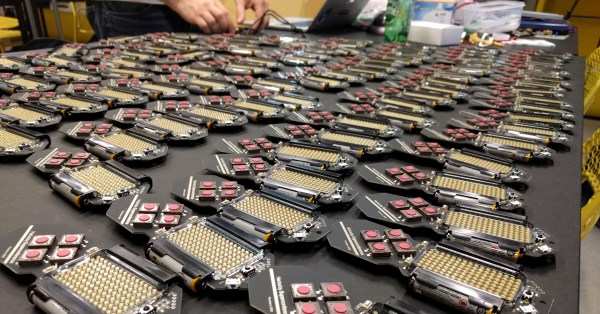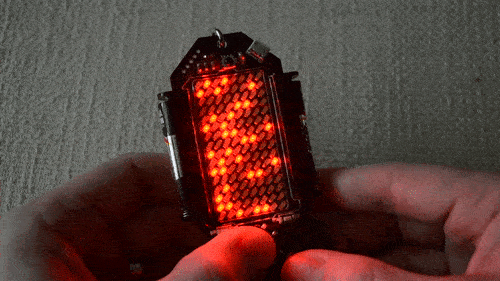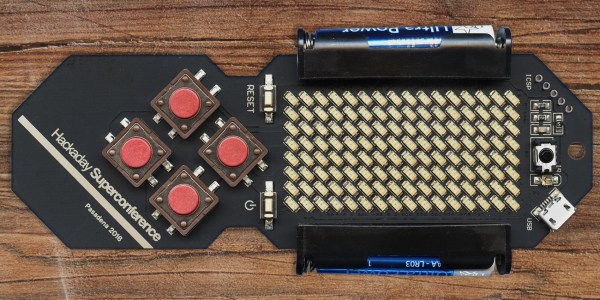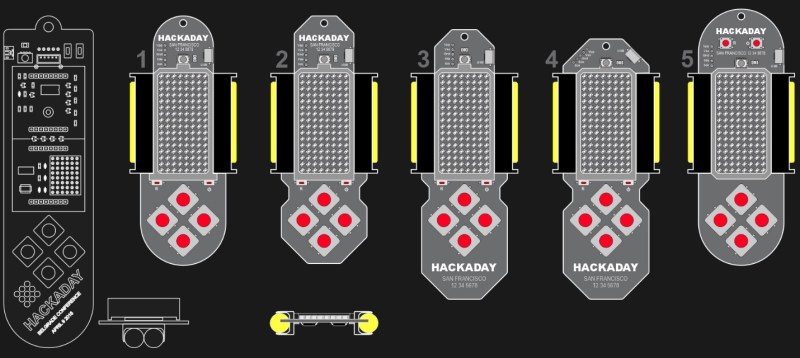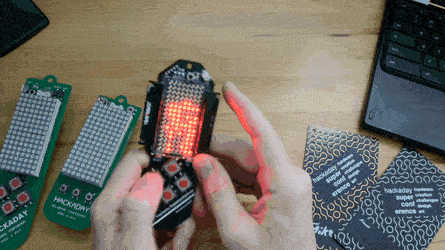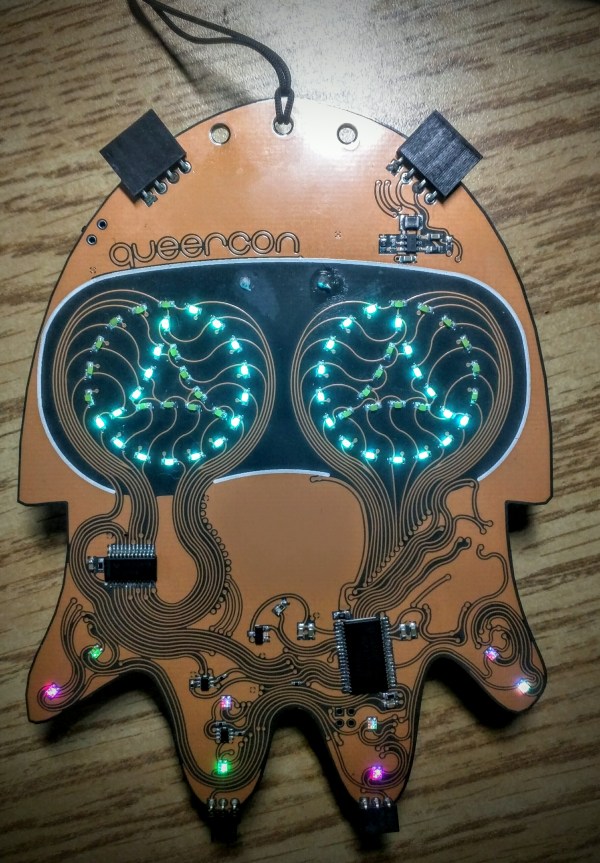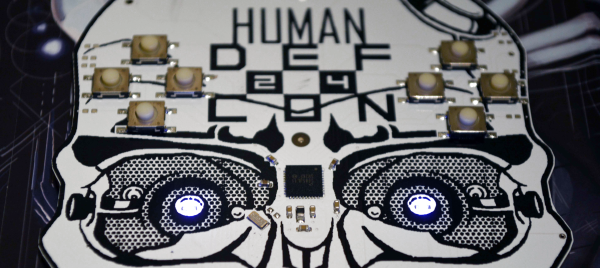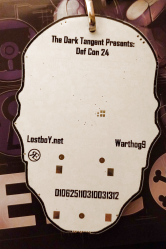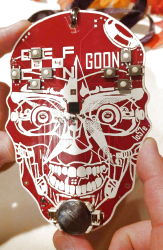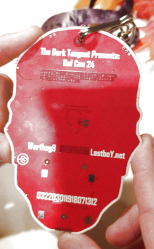What does it take to go from concept to dropping a finished product into the hands of the end user? Gather ’round for a story that pulls people and parts from around the world to make one killer piece of hardware art.
badge166 Articles
Solving Hackaday’s Crypto Challenge
Although I’ve been to several DEF CONs over the past few years, I’ve never found time to devote to solving the badge. The legendary status of all the puzzles within are somewhat daunting to me. Likewise, I haven’t yet given DefCon DarkNet a try either — a real shame as the solder-your-own-badge nature of that challenge is right up my alley.
But at the Hackaday SuperCon I finally got my feet wet with the crypto challenge created by [Marko Antonic]. The challenge was built into a secondary firmware which anyone could easily flash to their conference badge (it enumerates as a USB thumb drive so just copy it over). This turned it into a five-puzzle challenge meant to take two days to solve, and it worked perfectly.
If you were at the con and didn’t try it out, now’s the time (you won’t be the only one late to the game). But even if you weren’t there’s still fun to be had.
Thar’ be spoilers below. I won’t explicitly spill the answers, but I will be discussing how each puzzle is presented and the different methods people were using to finish the quest. Choose now if you want to continue or wait until you’ve solved the challenge on your own.
The Hacks And Puzzles Of The Hackaday SuperCon Badge
The greatest hardware conference is right around the corner. We would be remiss if the Hackaday SuperConference badge wasn’t the greatest electronic badge in history, and we think we have something special here. We’ve already taken a look at the hardware behind this year’s badge, and now it’s time to take a look at the challenges for this year’s Hackaday SuperCon.
The Puzzles
A conference badge isn’t good unless there are a few puzzles to solve, and the 2016 Hackaday SuperCon badge doesn’t come up short. Hidden behind an accelerometer-based gravity simulation, a moving message display, a Tetris clone, and an infrared communications protocol are a series of five challenges. The first SuperCon attendee to beat the challenge will be awarded a fantastic cash prize of $256 and win the respect of their peers.
Continue reading “The Hacks And Puzzles Of The Hackaday SuperCon Badge”
Design And Hacking Drilldown: SuperCon Badge
One can imagine a political or business conference without an interactive badge — but not a hacker conference. Does this make the case for hackers being a special breed of people, always having something creative to show for their work? Yes, I think it does.
Following the Hackaday Belgrade conference in April of this year, we met at the Supplyframe offices to discuss the badge for the Hackaday SuperConference that will happen in Pasadena on 5+6th of November. The Belgrade conference badge (which was fully documented if you’re curious) was surprisingly popular, and I was asked to design the new one as well.
I was prepared to come up with something completely new, but [Mike Szczys] suggested keeping with the same basic concept for the project: “No reason to change anything, we have a badge that works”. To which I responded: “Well, the next one will also work”. But then I realized that “works” does not stand for “being functional”. The key is that it was embraced by visitors who played with it, coded on it, and solved a crypto challenge with it.
The World Doesn’t Have Enough LEDs
 Fast forward six months — here are the modifications made to the basic concept. First, the existing LED matrix, which was composed of two compact 8×8 blocks, was replaced by 128 discrete SMD LEDs. It was a much needed change to help scale down the dimensions and clunkiness, but also to avoid another painful experience of trying to purchase and have the matrix displays shipped, which seriously threatened the production of the previous badge.
Fast forward six months — here are the modifications made to the basic concept. First, the existing LED matrix, which was composed of two compact 8×8 blocks, was replaced by 128 discrete SMD LEDs. It was a much needed change to help scale down the dimensions and clunkiness, but also to avoid another painful experience of trying to purchase and have the matrix displays shipped, which seriously threatened the production of the previous badge.
It’s a long story which I discussed in my Belgrade talk — it turned out we did not manage to get enough common anode (CA) displays from all distributors in the whole world. We had a plan B, which also fizzled, leaving us with the plan C which actually included two “C”s: Common Cathode. We cleaned up all the supplies at five distributors, and managed to get 122 CA red, 340 CC red and 78 CA green displays (enough for only 270 badges) — the entire world supply. After that, you couldn’t get any 38 mm Kingbright’s display for months! The only problem was that there were two different versions of PCBs, one for CA and the other for CC displays, but luckily only one version of software, as it could autodetect the display type.
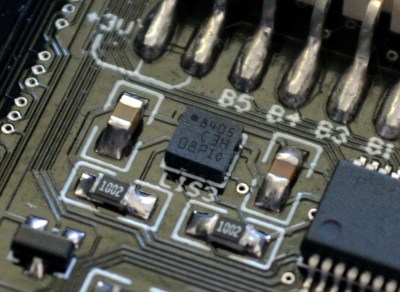 Motion and Expansion
Motion and Expansion
So, what else was new in the concept? In the Belgrade version, the badge supported an accelerometer module and included an unpopulated footprint in case you decided to install it, but now the badge has the MEMS chip LIS3 as an integral part. There are nine pads (with five I/O ports, driven directly from the MCU) to which you can add a 9-pin expansion connector. There will be a number of these connectors at the Design Lab, so that anyone can expand their badge for their convenience, on the spot.
The Visual Design
The biggest change was in the visual design. What we came up with ended up being a fair bit smaller, lighter, with a more convenient shape, and less than half the thickness of the previous one. After we had scrapped quite a few ideas during the development process (including stylized skull, frog, etc), we were left with a couple of options which you can see on the image below. The wireframe drawing on the left hand side is the Belgrade badge, shown here for a size comparison. At this point the locale and date of the conference weren’t yet definitive, which is why you see San Francisco written on the images.
Design number 4 prevailed, so the PCB layout could begin. I don’t like autorouted PCBs, so I was in for quite a rough time trying to solve the routing manually having only 2 layers on the board at my disposal.
Routing a Compact LED Matrix
The LED matrix is so dense that there was virtually no room on the LED layer, so most of the tracks on the component layer had to be routed as if it was a single layer PCB. To make matters worse, the LED layer is routed as a matrix, with a bunch of horizontal and vertical tracks, otherwise a good reason to use a 4-layer PCB. To stay inside the budget, everything had to be placed on 2 layers, and that’s why the final result seems so confusing at the populated area between batteries:
Continue reading “Design And Hacking Drilldown: SuperCon Badge”
New SuperCon Badge Is 40% Lighter And A Work Of Art
The 2016 Hackaday SuperConference is just around the corner and today we get a good look at the hardware badge. It was designed by [Voja Antonic] — a legend of hardware creation who will be at the conference. I like to think of him as the Woz of the Eastern Bloc, having designed the Galaksija computer. This badge is a beautiful example of embedded design. We’ll dive into all of the details after the break.
Get your ticket now for 48-hours of talks, workshops, the Hackaday Prize party, badge hacking, and so much more.
Continue reading “New SuperCon Badge Is 40% Lighter And A Work Of Art”
What We Learned From The 2016 Queercon Badge
DEF CON has become known for the creative electronic badges, and now we get to see a variety of them dangling from lanyards every year. This year, the Queercon badge stood out as the one that got the most people asking “where did you get that?!” Once again, [Evan Mackay], [George Louthan], [Jonathan Nelson], and [Jason Painter] delivered an awesome badge for this con-within-a-con for LGBT hackers and their friends.
The badge is a squid shape, with a nifty clear solder mask, printed on black FR4, and routed with natural curved traces. The squid eyes consist of sixty cyan LEDs, with RGB LEDs on the tentacles. The eyes make expressions, and the tentacles light up with a selectable pattern. Hitting the “ink” button shoots your pattern out to all nearby devices using the 2.4 GHz radio on board, and a set of small connectors can be used to “mate” with other badges to learn patterns. Yes, the Queercon badge always has suggestive undertones.
After playing with it for the whole con, we think this badge has some good lessons for electronic badge designers:
Variable Brightness
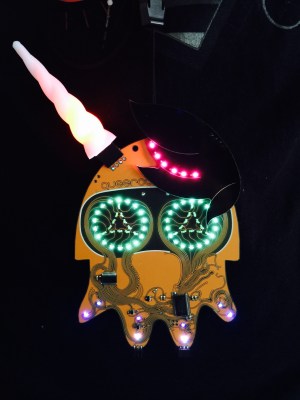
This badge used a phototransistor as a light sensor to measure ambient light and set the brightness accordingly. With over 60 LEDs, this helped the two AA batteries last for nearly the entire conference.
Power Switches
This badge has a power switch. That switch turns the badge off. This probably sounds very obvious, but it’s also unfortunately uncommon on electronic badges. The switch means people turn the badge off at night, and don’t have to yank batteries when firmware glitches.
Hats!
The badge had two expansion ports on the squid’s head for adding hats. These were given power, and the connector spec was published before the event. Our favourite? A unicorn horn with a rainbow LED inside.
Social Badges are Fun
This has been the fourth Queercon badge in a row that communicated with other badges to unlock things. This is actually a neat way to get people to interact, and leads to a whole host of suggestive puns. Badginal intercourse, anyone?
We’ve heard that next year’s badge is already in the works, and we look forward to seeing what these folks come up with next. For now, you can grab all the hardware design files and get inspired for your own electronic badge build.
DEF CON’s X86 Badge
This year’s DEF CON badge is electronic, and there was much celebrating. This year’s DEF CON badge has an x86 processor, and there was much confusion.
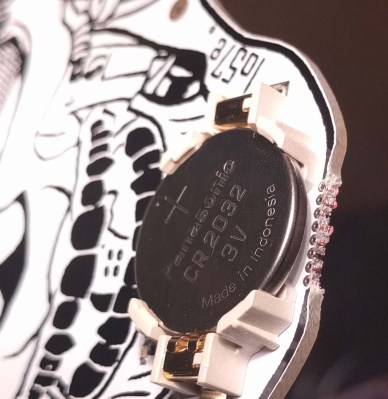
The badge this year, and every year, except badges for 18, 17, 16, 15, and 14, designed by [Joe Grand], and badges from pre-history designed by [Dark Tangent] and [Ping], was designed by [1057], and is built around an x86 processor. Specifically, this badge features an Intel Quark D2000 microcontroller, a microcontroller running at 32MHz, with 32kB of Flash and 8kB of RAM. Yes, an x86 badge, but I think an AT motherboard badge would better fulfill that requirement.
As far as buttons, sensors, peripherals, and LEDs go, this badge is exceptionally minimal. There are eight buttons, laid out as two directional pads, five LEDs, and a battery. There’s not much here, but with a close inspection of the ‘chin’ area of the badge, you can see how this badge was programmed.
As with any [1057] joint, this badge features puzzles galore. One of these puzzles is exceptionally hard to photograph as it is in the bottom copper layer. It reads, “nonpareil bimil: Icnwc lsrbcx kc htr-yudnv ifz xdgm yduxnw yc iisto-cypzk”. Another bottom copper text reads, “10000100001 ΣA120215”. Get crackin’.
A gallery of the Human and Goon badges follows, click through for the best resolution we have.
This post has been updated to correct the record of who designed badges for previous cons.

